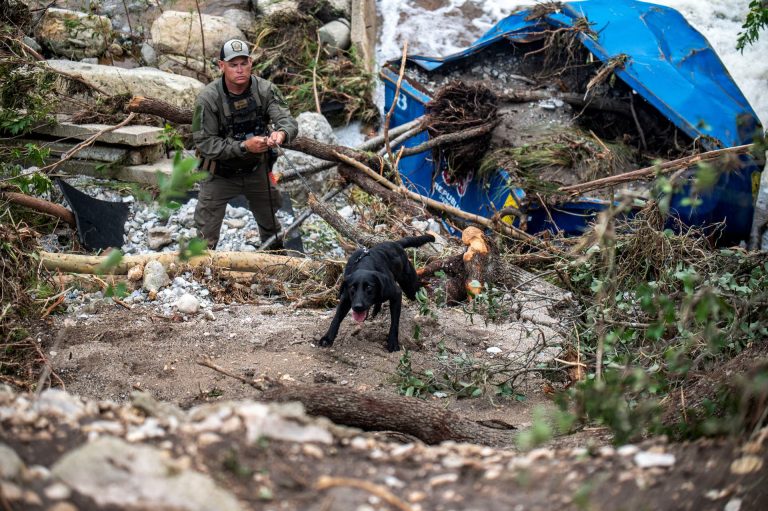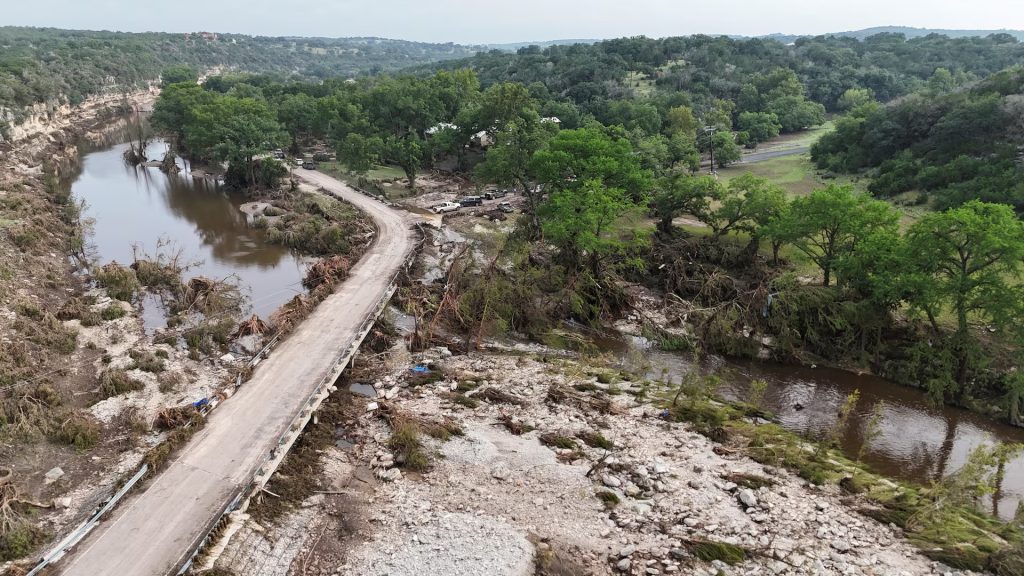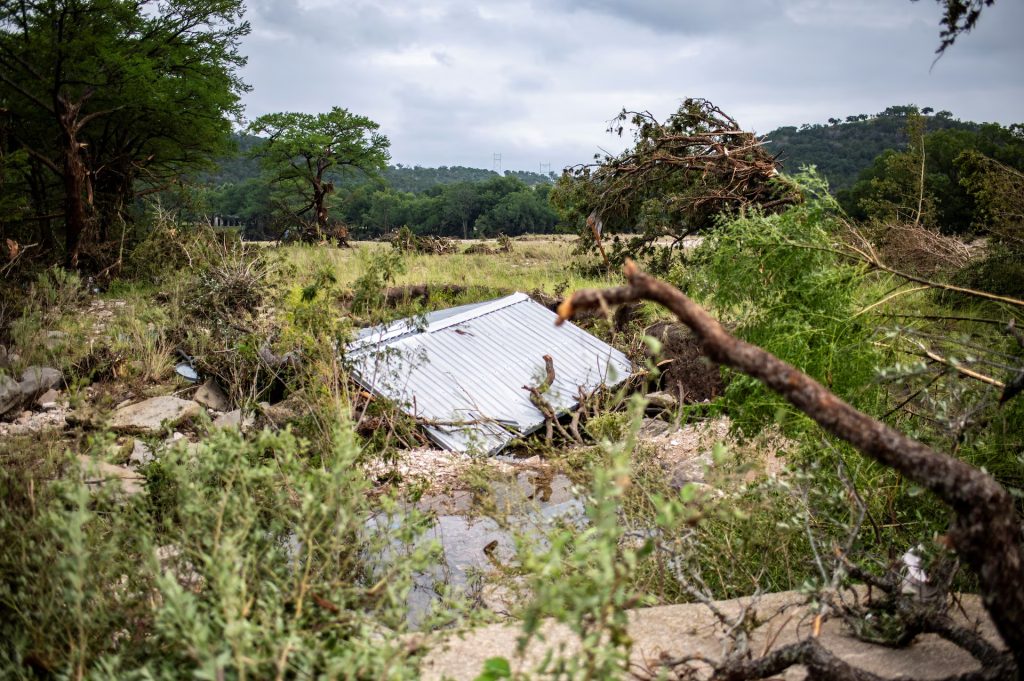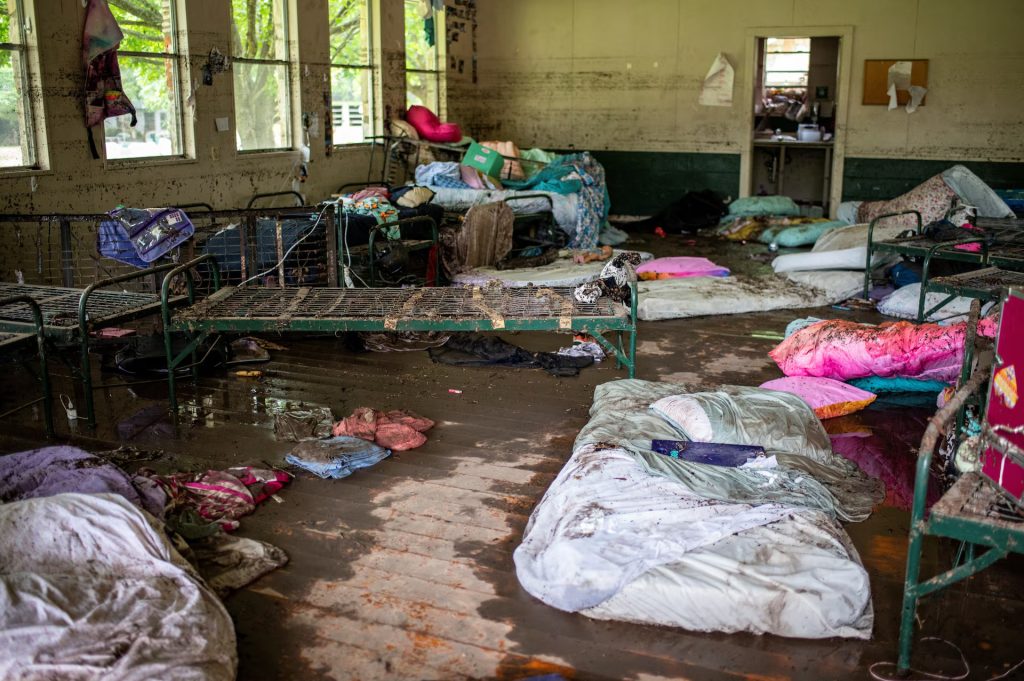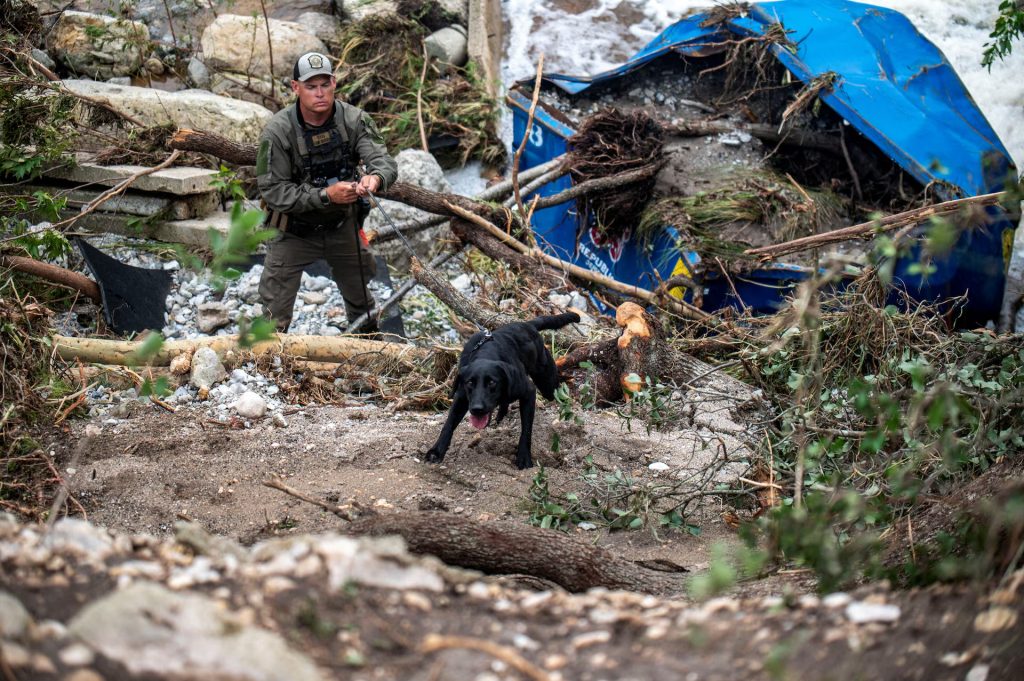Catastrophic Flooding in Texas: Causes and Devastation of the July 2025 Disaster
In early July 2025, Texas Hill Country, particularly Kerr County, was devastated by a catastrophic flash flood that claimed at least 43 lives, including 15 children, and left 27 people missing, many from Camp Mystic, a Christian summer camp along the Guadalupe River. This disaster, one of the deadliest in Texas history, unfolded with little warning, overwhelming residents, officials, and vacationers. This article examines the causes of the flood, its profound impacts, and the urgent need for improved flood preparedness in “Flash Flood Alley.”k
Causes of the Flood
The flooding resulted from a rare convergence of meteorological and geographical factors:
1. Remnant Moisture from Tropical Storm Barry: The primary trigger was the remnant circulation of Tropical Storm Barry, which merged with a trough over Central Texas. This system drew in excessive moisture from the Gulf of Mexico, where above-average ocean temperatures fueled high water vapor levels. Atmospheric moisture ranked in the top 0.5% of historical records, with approximately 2.25 inches of precipitable water per air column.
2. Slow-Moving Thunderstorm System and Mesoscale Convective Vortices (MCVs)**: A stalled storm system, intensified by multiple MCVs—rotating weather systems that enhance rainfall—caused relentless downpours. One undetected MCV originated in Mexico, while another formed over Texas, leading to “training” storms that dumped 5–15 inches of rain in hours, with some areas receiving up to a foot.
3. Geographical Vulnerability: The Hill Country’s karst terrain, with its limestone, thin soils, and steep hills, is highly susceptible to flash flooding. The Balcones Escarpment funnels rainfall into narrow valleys, amplifying runoff. Recent drought conditions left the ground unable to absorb the deluge, causing the Guadalupe River to surge from 7 feet to 29 feet in hours, its second-highest level on record.
4. Urbanization and Runoff: Increased urban development in Central Texas has reduced the land’s ability to absorb rainfall, increasing runoff by 2–6 times compared to natural terrain. This worsened flooding in low-lying areas and along riverbanks.
5. Climate Change Context: Rising global temperatures, driven by fossil fuel emissions, have intensified rainfall events. Warmer air holds more moisture, and warmer Gulf waters increase evaporation, heightening the risk of extreme downpours in flood-prone regions like Texas.
The Disaster Unfolds
The flooding struck on July 4, 2025, during the Independence Day holiday, when families and tourists were in the Hill Country for celebrations and summer camps. The Guadalupe River, a popular attraction, became a deadly torrent, rising 26 feet in 45 minutes in some areas. In Kerrville, water levels surged over 22 feet in hours, submerging riverfront communities, camps, and infrastructure.
The flood’s speed left little time for evacuations. Kerrville City Manager Dalton Rice noted that the event unfolded within two hours, too rapid for advance warnings. The National Weather Service issued a flood watch on Thursday, but forecasts underestimated the rainfall’s severity, with urgent alerts issued early Friday when many were asleep.
Camp Mystic, a nearly century-old girls’ camp with 700 campers, was among the hardest hit. At least 27 girls were reported missing, with the camp suffering “catastrophic level floods.” Cabins had mud lines six feet high, and buildings were left in ruins. Nearby, Jane Ragsdale, director of Heart O’ the Hills camp, was among the fatalities.
Rescue operations were extensive, with over 850 people saved, some clinging to trees or rooftops. The Texas National Guard deployed helicopters, boats, and divers, but the death toll climbed, with 28 adults and 15 children confirmed dead in Kerr County by Saturday evening, and 17 bodies unidentified.
Impacts and Aftermath
The flood’s toll was immense:
– Loss of Life: At least 43 people died in Kerr County, including 15 children, with additional fatalities in Travis and Kendall Counties. Twenty-seven individuals, mostly children from Camp Mystic, remained missing as of July 6.
– Property Damage: Homes, businesses, schools, roads, and bridges were destroyed or severely damaged. In Comfort, 60-foot trees were uprooted, and entire communities were reduced to rubble. Economic losses are estimated in the billions.
– Emotional Toll: Families posted desperate pleas for information about loved ones, particularly children. Reunification centers were established, with the Red Cross aiding relief efforts.
– **Infrastructure Strain**: Local emergency systems were overwhelmed, with more rain forecast for July 6, heightening risks.
Response and Criticism
Governor Greg Abbott issued an emergency disaster declaration for 15 counties, later expanded to include Bexar, Burnet, Caldwell, Guadalupe, Travis, and Williamson Counties. He requested federal aid, which President Donald Trump pledged. However, local officials faced criticism for inadequate warning systems. Kerr County Judge Rob Kelly admitted the lack of a river warning system, and the National Weather Service was faulted for underpredicting the storm’s severity. Texas Emergency Management Chief Nim Kidd defended the agency, noting the unprecedented rainfall volume.
Some experts suggested federal workforce cuts at the National Weather Service contributed to forecasting failures. Homeland Security Secretary Kristi Noem acknowledged the insufficient “moderate” flood watch and promised system upgrades.
Lessons and Future Preparedness
The 2025 flood highlights the urgent need for enhanced flood preparedness in Texas, a state with a history of deadly floods, from the 1900 Galveston Hurricane to Hurricane Harvey in 2017. The Hill Country’s “Flash Flood Alley” is particularly vulnerable due to its topography and growing urbanization.
Key steps include:
– Improved Warning Systems**: Expanding stream gauges, early warning systems, and “reverse 911” notifications.
– Floodplain Management: Enforcing stricter regulations on development in flood-prone areas to reduce runoff.
– Community Education: Encouraging residents to sign up for weather alerts and prepare evacuation plans.
– Climate Adaptation: Addressing climate change’s role in intensifying rainfall through emission reductions and resilient infrastructure.
The July 2025 Texas flood, driven by Tropical Storm Barry’s remnants, a stalled storm system, and the Hill Country’s unforgiving terrain, was a tragic reminder of the region’s vulnerability. With 43 confirmed deaths, 27 missing, and widespread destruction, the disaster demands reflection and action. As Texas rebuilds, investments in forecasting, infrastructure, and climate resilience are critical to preventing future tragedies in Flash Flood Alley.
**Sources**:
– National Weather Service
– The Guardian
– The Washington Post
– The New York Times
– ABC News
– Reuters
– NPR
– CBS News
– Posts on X

